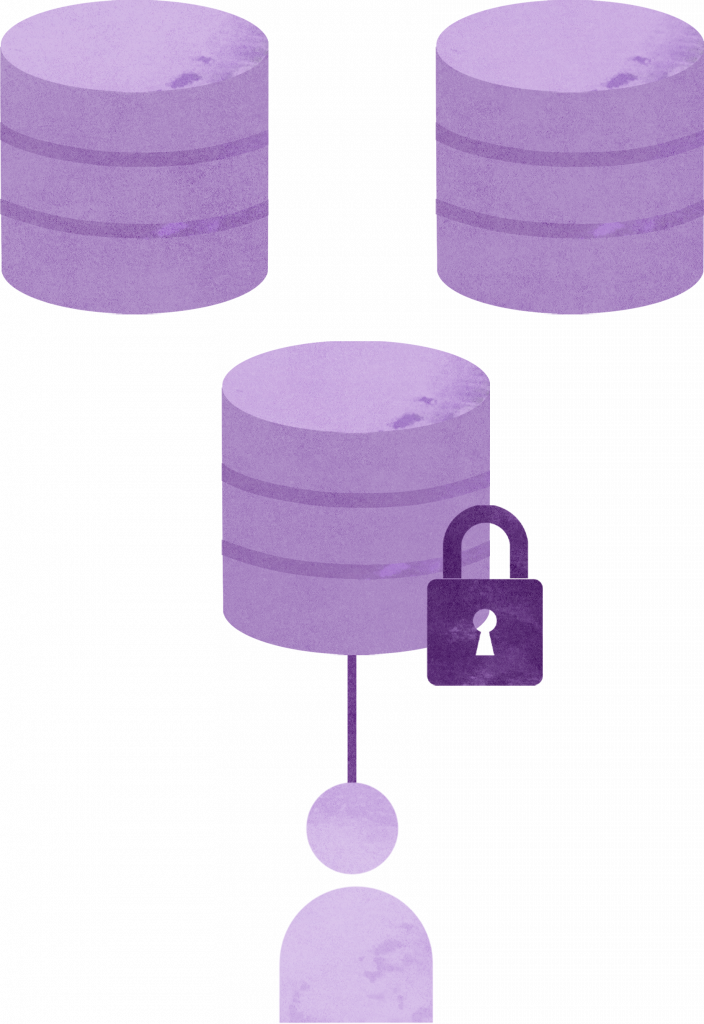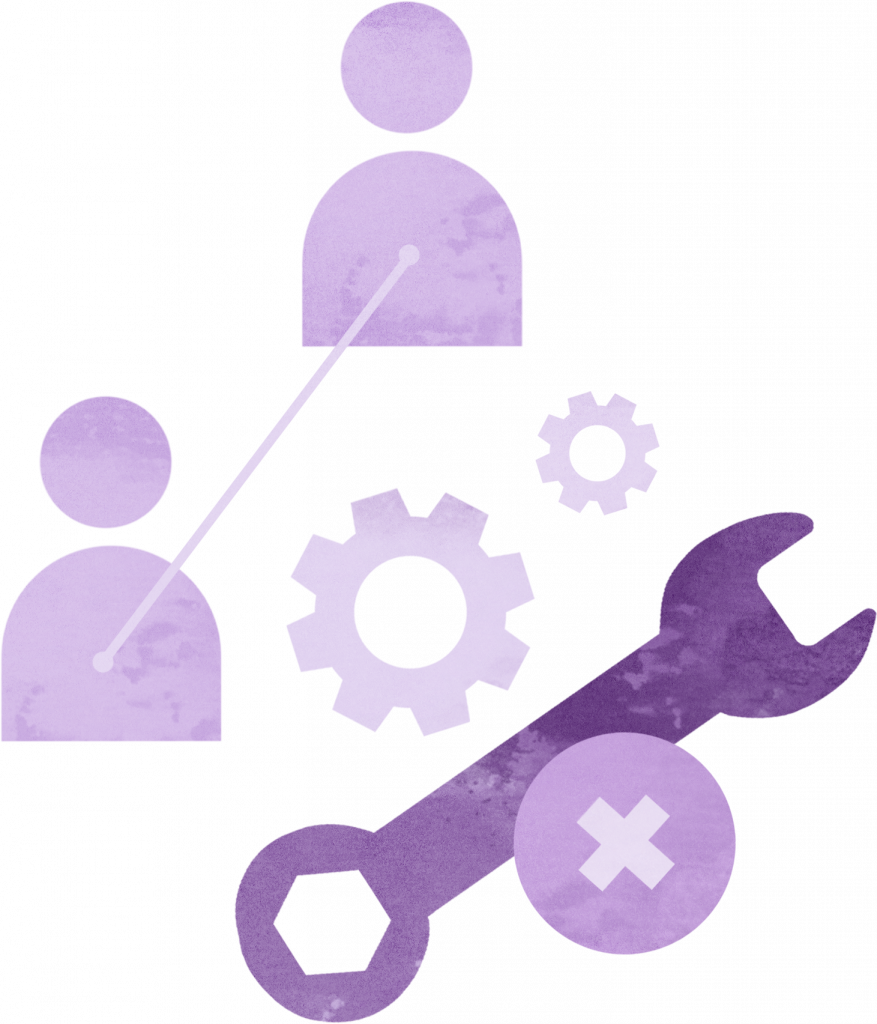The technical challenges faced in building participatory urban data governance frameworks are not dissimilar to those faced in other sectors. There is a need to lower the barrier of entry for stewards and communities alike, to build data sharing networks and digital infrastructure that facilitate responsible sharing, and to communicate impact in accessible ways. However, the unique nature of urban data especially necessitates the prioritisation of interdisciplinary communication between data. Urban life, and the levers that impact it are inherently cross-sectoral, and their governance must be treated as such. Further, urban life is arguably the densest site for community engagement. Numerous state functions already exist across the globe to facilitate citizen participation in public decision-making processes. Responsible stewardship, collection and management of data, then, becomes but a layer.
These challenges can be viewed as being embedded at two levels; the macro layer being that of data infrastructures; the networks and ecosystem that enables data sharing and the micro layer; the ways in which individuals, groups, and stewardship efforts content with technology as they participate. Questions that exist at the micro layer include: How can barriers of access to technological citizen science tools be lowered? Can participatory design at the stages of building achieve this? At the macro layer, we probe questions such as: What kind of principles must governments imbibe when building with the purpose of better urban data governance in mind? What are the elements of supportive technical ecosystems or quintessential railroads to mitigate these challenges?

Challenge u2.1
Unsupportive technical ecosystems: Stewards have limited access to data and data sharing infrastructures
When building community-centric platforms or digital solutions for urban data governance, our research finds that stewards often do not have access to datasets that (a) can help enhance these efforts; or (b) in some cases, are fundamental to operationalising efforts. In many cases, this includes access to government data, or data that is accessible but not machine readable, clean or usable. This is a challenge most profoundly seen in developing regions, where there is a latency between the digitisation of state agencies and the progress made by community-led initiatives. Many stewards in these contexts operate as ‘data hygiene layers’ for publicly available datasets.
A common challenge also seen in this respect is the duplication of efforts when governments begin to build open data platforms or layers for governance. Many actors are creating new platforms to reconcile data. It is important to consider what the degrees of interoperability are between these platforms and how they might be better harmonised.
The role of data formats and interoperability in this regard is also fundamental. When initiatives across stakeholder types, organisations and sectors are not harmonised in their data collection and sharing formats, metadata categorisations and data sharing infrastructures, ecosystems become increasingly fragmented, and systems are unable to communicate in a meaningful way.



Strategy u2.1.1
Employing data verification mechanisms and maintaining extensive metadata

In order to mitigate existing fragmentation and lack of communicability across data governance efforts in urban contexts, a multi-stakeholder push is required. On the matter of streamlining data sharing networks, standards and underlying infrastructures – the public sector must take a lead. It is important to envision urban data governance as more than instrumental; with its cross-sectoral modalities, and extremely direct impact on the lived experiences of communities – urban data governance is a matter of public good. Consequently, state efforts to build infrastructures for it must centre digital public infrastructure – envisioned as dynamic, open and communicative. There are growing examples of state efforts to amplify urban data governance innovation, efficiency and multistakeholder participation through thoughtful infrastructural foundations.
Open API’s are increasingly being deployed by governments, to allow developers to access functionality, enable greater flexibility and innovation and open the doors for other stakeholders to build new applications and services – ones that can serve greater public interest. In India, for example, open API’s in the financial sector have seen considerable success as a means to enable innovation for digital public goods. Often heralded as one of the most advanced digital governments in the world, Estonia’s data exchange layer (X-Road) makes up a key component of its e-governance infrastructure. X-Road enables the exchange of information between various information systems and databases. This has allowed different organisations – like government agencies, healthcare providers, banks to share information in secure, controlled networks. In turn, this enables the creation of digital services that utilise multiple data sources – improving the efficiency of governance and welfare services, but also easing barriers of access to data for innovation.
Similar to how open API’s allow developers to access the functionality of a web-based software application or web tool, X-Road provides a set of guidelines and standards for accessing and exchanging data between different databases and information systems. Beyond this, specifically designed to ensure this secure and efficient exchange, it is a data exchange layer that includes security, interoperability, and data management features which make it unique. X-Road’s success has been on several parameters – security, interoperability, flexibility, transparency and cost-effectiveness – due to its open-source and buildable nature.
Data exchange layers and open infrastructure creates benefits across sectors, and this makes them an optimal framework by which to streamline urban data governance – which is characterised by a confluence of multiple data types and sectors. Adopting a view toward cross-cutting, enabling open infrastructure can aid many facets of the ecosystem required to bolster participatory urban data governance.

Strategy u2.1.2
Ensuring standardisation and interoperability of government / governance platforms to create reliable networks, making it easier for data stewards to participate

As seen in examples above, interoperability enables secure exchange of data, removing the need to rebuild for new services. An important aspect of enabling this is ensuring standardisation. For organic, non-institutional data stewardship efforts to be able to plug into the wider network of existing data sharing and value exchange, standardising data formats, metadata type, anonymisation norms and processing mechanisms can lower the barrier of entry.
This is a role primarily fulfilled by public sector actors – harmonising existing data formats across ecosystems and find deeper mention in the sectoral pullouts under Play 4.

Challenge u2.2
Citizen-led initiatives lack technical capability or knowledge about data. This limits participation potential
Following from the previous challenge; where there is considerable access to usable data, community stewards are often ill-equipped to make use of this data. The limited technical capabilities of citizen scientists, which is referred to in the Environment and Sustainability sectoral pull-out as well, hampers the functionality and dilutes the potential of stewards in the space. Their functioning and impact stands to gain enormously from upskilling and capacity building focussed on data infrastructures and analysis. Further, this inaccessibility of technical tools or data-driven insights within communities threatens to widen the existing epistemic gulf in how people might partake in their data governance. Consequently, they have less agency in shaping their lived experiences. Many ground-up initiatives, mentioned in case studies throughout this playbook, play the role of collecting and generating data. This vital role fills gaps in areas like air quality, geospatial mapping, and more. However, without the technical know-how and existing infrastructure to share data reliably and responsibly, the potentially cross-sectoral network of urban data governance and cities’ initiatives is impeded.
Most of the computational tools data governance has seen so far have been built by and optimised for higher levels of expertise than what the average citizenry may have and much higher than what most disadvantaged communities hold. It is worthwhile to now consider which aspects of design and the data life cycle can meaningfully allow participation from those less technologically enfranchised, and how this can be enabled.




Strategy u2.2.1
Building lightweight, usable and accessible tech for communities: Prioritising simplicity by design and participatory design

Data being captured can often be quite technical – this is especially true of air and water quality data or other sensor based data. Yet these data types form a large part of how urban governance impacts lived experiences. Citizens may not know how to operate sensors, IoT devices, or address data quality issues. An important way to mitigate this is by involving communities in design stages – making sure that participation is embedded in early layers of development of these tools, as well as in how they can be used. ‘Participatory design’, discussed in our sectoral pull-outs for Health and Environment involves enquiring what communities have, want and need – and design accordingly.
WaterCan, a citizen science network in South Africa that focuses on urban living areas, prioritises citizen upskilling and ease-ofuse of their water testing toolkits to ensure greater adoption and scalability for citizen science activists. At the stage of toolkit design, this was done by involving communities before the testing of the kit – by going over processes and crucial knowhow both in the field and through webinars. A multilingual kit brochure is supplemented with videos on use for illiterate groups. While numerous people may use the ’dip sticks’ for testing water, it is difficult to depend solely on community analyses of results. To increase data verifiability, an application that can read photographs of the results to analyse them in the backend is being developed. An ‘environmental observations’ page serves as a site for plain language logging of water quality, surrounds and more by communities.
A crucial insight from primary and secondary research with stewards across the globe has been that most often, technical problems – or problems based in a lack of community technical capacity – are not ones that necessitate technical solutions. Solutions must be rooted in the community – through participation and responsible governance of data. Another technical barrier to community participation is the inaccessibility of data formats and information types. A common bottleneck to instilling participation, communities are unable to
- understand the data from citizen science efforts and as a result,
- are unable to have a holistic understanding of the value and impact from such efforts.
Problem-led value articulation from governments and stewards can help citizens understand lived impact of participative data governance, and accessible data visualisation tools with the deployment of visual/auditory modes of communicating knowledge are an essential component for easing technical barriers to participation.
